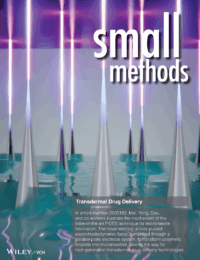Scanning Probe Microscopy
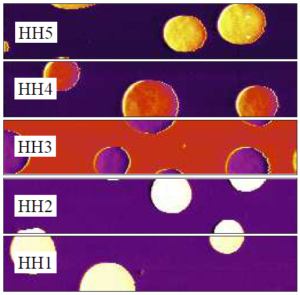
Probe Based Lithography
Probe based lithography involves creating nanometer sized features from photoresist and metal on conducting and semiconducting substrates. Near field optical, electrical and thermal fields are employed in combination with evaporation, etching and electroplating to provide high-speed alternatives for mask-less nanofabrication.
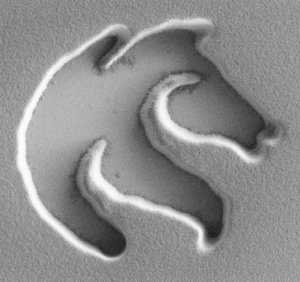
Nanopositioning
A nanopositioner is a electromechanical device for moving objects in three dimensions with atomic, or sub-atomic resolution. Nanopositioners are employed in applications such as imaging, fabrication and optics. This field encompasses mechanical design, sensor design, and control theory. More details.
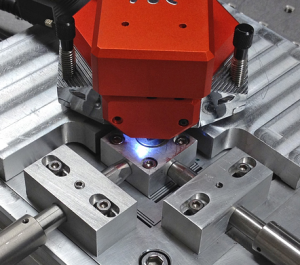
Electroactive Optics
Piezoelectric actuators can be combined with mirrors, lenses and objectives to actively control the path and properties of an optical field or laser beam. High speed electro-optics are required for precision lasers, maskless lithography, and microscopy.
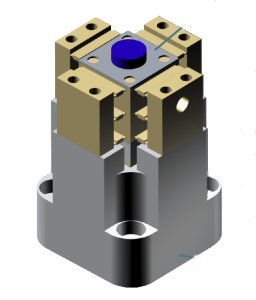
Precision Sensors
This project aims to study the fundamental limitations of capacitive, optical and magnetic position sensors. New techniques are under development to provide sub-atomic resolution over extremely wide bandwidth.
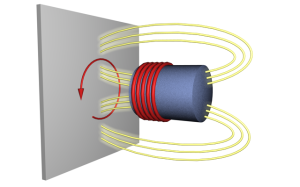
Biomedical Devices
An endoscopic pill robot is being developed for noninvasive imaging and intervention. The robot can be swallowed and includes power transmission, 6-Dimensional localization, and locomotion.
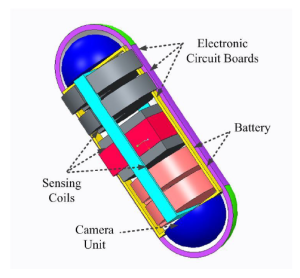
Piezo Actuators and Amplifiers
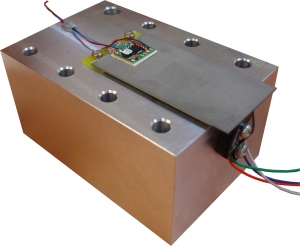
Piezo bender actuator with integrated 200V power electronics
Piezo Robotics
Due to their compact size and high efficiency, piezoelectric actuators are ideal for micro-actuation in bio-inspired robotics. This project is developing actuators and mechanics for a piezoelectric dragon-fly robot.
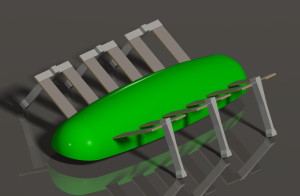
H. D. Vu T. A. Hoang, D. Ngo
Free-templated Microfabrication of Hydrogel Microneedles Using Electrohydrodynamic Technique for Transdermal Drug Delivery Conference
The 29th International Conference on Miniaturized Systems for Chemistry and Life Sciences - Micro-Total Analysis Systems (uTas), Adelaide, 2 - 6 November, 2025, 2025.
@conference{Hoang2025,
title = {Free-templated Microfabrication of Hydrogel Microneedles Using Electrohydrodynamic Technique for Transdermal Drug Delivery},
author = {T. A. Hoang, H. D. Vu, D. Ngo, N. L. Mai, C. Doan, D. K. Tran, Y. Xiao, B. Rehm, Y. K. Yong, V. T. Dau},
year = {2025},
date = {2025-11-03},
urldate = {2025-11-03},
booktitle = {The 29th International Conference on Miniaturized Systems for Chemistry and Life Sciences -
Micro-Total Analysis Systems (uTas)},
address = {Adelaide, 2 - 6 November, 2025},
abstract = {This study presents a template-free electrostreching microfabrication method for hydrogel microneedles, targeting applications in wound healing and drug delivery. Precursor solutions of gelatin methacryloyl (GelMa) and hyaluronic acid methacryloyl (HAMA) were subjected to a high-voltage electric field, forming a hydrogel microneedle structure by undergoing UV-crosslinking and solvent evaporation. The fabricated microneedles demonstrated optimal geometries, i.e., height-to-base ratios and the ability to be grown in parallel. In vitro cytotoxicity test confirmed the biocompatibility of the microneedles, as cells were able to adhere and proliferate on their surfaces.
Traditional transdermal drug delivery approaches, including hypodermic needles, topical creams, and transdermal patches, have significant drawbacks such as slow drug absorption and the painful and discomfort injection process [1], [2], [3]. Microneedles, which are arrays of micron-scale needles arranged in a small patch, offer an effective alternative solution by combining a non-invasive method and fast onset action to enhance patient compliance and potential for self-administration. Although there are various types of microneedles, most are fabricated using template-based methods such as moulding, lithography, or top-down micromachining, which require complicated processes in cleanroom facilities and limit design flexibility. To address these limitations, we report a template-free fabrication approach using electrohydrodynamic principles to produce microneedles directly on multiple substrate materials. Building upon prior work introduced in Small Methods [4], which focused on a proof-of-concept demonstration, this study extends the application to biocompatible hydrogels and evaluates the system’s scalability and safety for transdermal drug delivery. The method enables parallel microneedle fabrication and supports cell viability, highlighting its potential for practical therapeutic applications.
An overview of microneedle fabrication is illustrated in Figure 1. A hydrogel solution containing GelMa, HAMA, and the photo-initiator LAP (Lithium phenyl-2,4,6-trimethylbenzoylphosphinate) was prepared and dispensed as a droplet onto a substrate positioned between the two high-voltage electrodes. Under the applied pulsating electric field , the droplet was elongated and stretched into a conical shape (Taylor-cone shape). The droplet was then exposed to UV light to initiate hydrogel photo-polymerisation, which solidified the droplet’s outer layer. By the subsequent air-dry process, the solvent completely evaporates, resulting in a solid microneedle. This method enabled parallel microneedle formation, as shown in Figure 2, where five microneedles were simultaneously grown with consistent form and geometry. Figure 3 demonstrates the in-situ adaptability of the method, showcasing its ability to grow microneedles directly on various commercially available adhesive patches. GHMa-1, -2, and -3 samples exhibited desirable geometries, with height-to-base ratios from 1.90 to 3.23 (Table 1). Biocompatibility of the microneedle was validated by culturing cells (RAW 264.7) in direct contact with the microneedle, where cell adhesion and proliferation were observed (Figure 4). These findings underscore the potential of this technique for scalable and flexible fabrication of biocompatible hydrogel transdermal drug delivery platforms.},
keywords = {},
pubstate = {published},
tppubtype = {conference}
}
Traditional transdermal drug delivery approaches, including hypodermic needles, topical creams, and transdermal patches, have significant drawbacks such as slow drug absorption and the painful and discomfort injection process [1], [2], [3]. Microneedles, which are arrays of micron-scale needles arranged in a small patch, offer an effective alternative solution by combining a non-invasive method and fast onset action to enhance patient compliance and potential for self-administration. Although there are various types of microneedles, most are fabricated using template-based methods such as moulding, lithography, or top-down micromachining, which require complicated processes in cleanroom facilities and limit design flexibility. To address these limitations, we report a template-free fabrication approach using electrohydrodynamic principles to produce microneedles directly on multiple substrate materials. Building upon prior work introduced in Small Methods [4], which focused on a proof-of-concept demonstration, this study extends the application to biocompatible hydrogels and evaluates the system’s scalability and safety for transdermal drug delivery. The method enables parallel microneedle fabrication and supports cell viability, highlighting its potential for practical therapeutic applications.
An overview of microneedle fabrication is illustrated in Figure 1. A hydrogel solution containing GelMa, HAMA, and the photo-initiator LAP (Lithium phenyl-2,4,6-trimethylbenzoylphosphinate) was prepared and dispensed as a droplet onto a substrate positioned between the two high-voltage electrodes. Under the applied pulsating electric field , the droplet was elongated and stretched into a conical shape (Taylor-cone shape). The droplet was then exposed to UV light to initiate hydrogel photo-polymerisation, which solidified the droplet’s outer layer. By the subsequent air-dry process, the solvent completely evaporates, resulting in a solid microneedle. This method enabled parallel microneedle formation, as shown in Figure 2, where five microneedles were simultaneously grown with consistent form and geometry. Figure 3 demonstrates the in-situ adaptability of the method, showcasing its ability to grow microneedles directly on various commercially available adhesive patches. GHMa-1, -2, and -3 samples exhibited desirable geometries, with height-to-base ratios from 1.90 to 3.23 (Table 1). Biocompatibility of the microneedle was validated by culturing cells (RAW 264.7) in direct contact with the microneedle, where cell adhesion and proliferation were observed (Figure 4). These findings underscore the potential of this technique for scalable and flexible fabrication of biocompatible hydrogel transdermal drug delivery platforms.

Young, T. R.; Yong, Y. K.; Fleming, A. J.
Multivalve Configuration for Soft Robotics: Overcoming the Trade-Off Between Speed and Accuracy in Pneumatic Systems Journal Article
In: Robotics Reports, vol. 3, no. 1, pp. 54-64, 2025, ISSN: 2835-0111.
@article{J25c,
title = {Multivalve Configuration for Soft Robotics: Overcoming the Trade-Off Between Speed and Accuracy in Pneumatic Systems},
author = {T. R. Young and Y. K. Yong and A. J. Fleming},
url = {https://www.precisionmechatronicslab.com/wp-content/uploads/2025/11/young-et-al-2025-multivalve-configuration-for-soft-robotics-overcoming-the-trade-off-between-speed-and-accuracy-in.pdf},
doi = {10.1177/28350111251380262},
issn = {2835-0111},
year = {2025},
date = {2025-09-29},
urldate = {2025-09-29},
journal = {Robotics Reports},
volume = {3},
number = {1},
pages = {54-64},
abstract = {This article describes a new multivalve configuration for achieving both high speed and high resolution in pneumatically driven soft robotic actuators. The proposed method utilizes dual on/off valves with differing orifice sizes in both the charge and discharge paths of the pneumatic circuit. The multiple-valve arrangement provides five states of flow-rate control, which can provide high flow rate for large step changes in pressure, and fine pressure control for precision positioning or force control. Compared with a proportional valve, the proposed method is physically smaller, lower cost, and significantly faster in charging and discharging a soft actuator. The performance of the proposed multivalve system is evaluated using a dual hysteresis control strategy, where the valve combination is dependent on pressure error. The proposed method is experimentally compared with two single-valve configurations, and the results demonstrate a significant improvement in both speed and accuracy. The proposed method is suited to applications that require a fast response between arbitrary set-points and precise control of position or interaction force.},
keywords = {},
pubstate = {published},
tppubtype = {article}
}
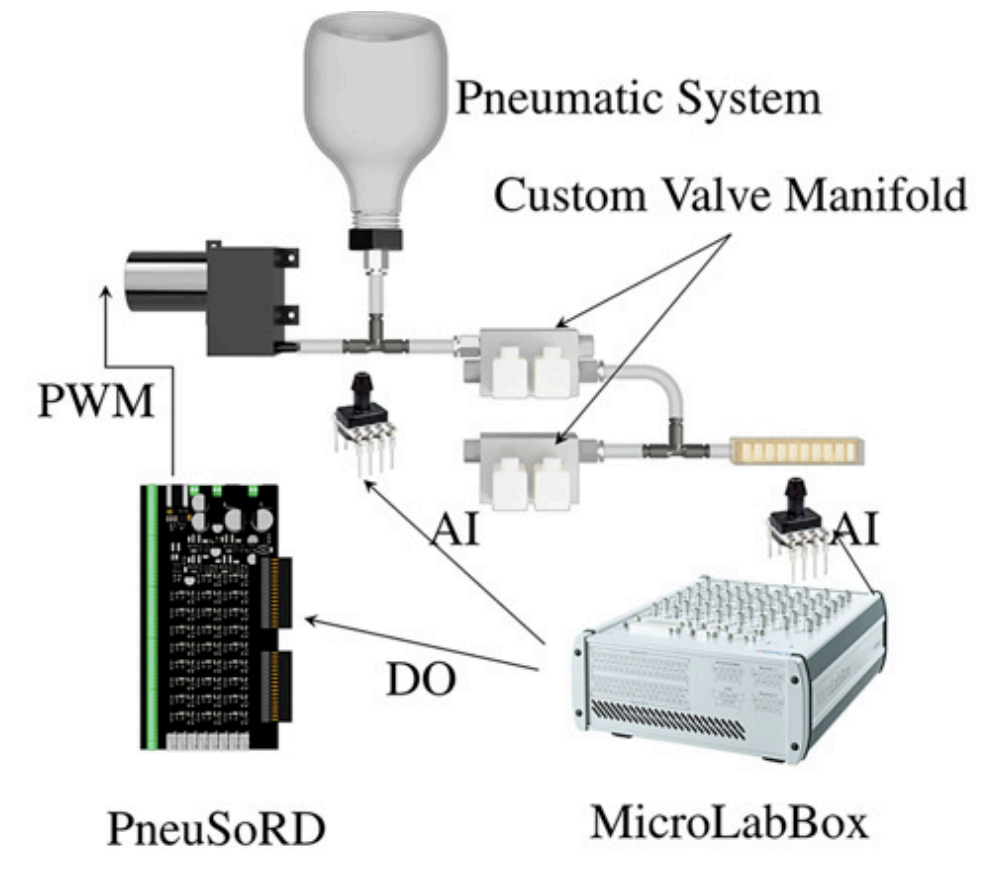
Litman, M.; Azarpeykan, S.; Hood, R. J.; Martin, K.; Pepperall, D.; Omileke, D.; Uzun, O.; Bhatta, D.; Yong, Y. K.; Chan, A.; Hough, N.; Johnson, S.; Bermejo, P. G.; Miteff, F.; Esperon, C. G.; Couch, Y.; Buchan, A. M.; Spratt, N. J.; Korin, N.; Ingber, D. E.; Beard, D. J.
Shear Stress Targeted Delivery of Nitroglycerin to Brain Collaterals Improves Ischaemic Stroke Outcome Journal Article
In: Advanced Science, vol. e06276, 2025.
@article{nokey,
title = {Shear Stress Targeted Delivery of Nitroglycerin to Brain Collaterals Improves Ischaemic Stroke Outcome},
author = {M. Litman and S. Azarpeykan and R. J. Hood and K. Martin and D. Pepperall and D. Omileke and O. Uzun and D. Bhatta and Y. K. Yong and A. Chan and N. Hough and S. Johnson and P. G. Bermejo and F. Miteff and C. G. Esperon and Y. Couch and A. M. Buchan and N. J. Spratt and N. Korin and D. E. Ingber and D. J. Beard},
doi = { https://doi.org/10.1002/advs.202506276},
year = {2025},
date = {2025-08-13},
urldate = {2025-03-01},
journal = {Advanced Science},
volume = {e06276},
abstract = {In patients with ischaemic stroke, retrograde perfusion of the penumbra by the leptomeningeal collateral vessels (LMCs) is a strong predictor of clinical outcome, thus raising the possibility that enhancing LMC flow could offer a novel therapeutic approach. Here, using computational modelling we show that LMCs experience elevated fluid shear stress that is significantly higher than that in other blood vessels during ischaemic stroke in animals and humans. We take advantage of this to selectively enhance flow in LMCs using shear-activated nanoparticle aggregates carrying the vasodilator nitroglycerin (NG-NPAs) that specifically release drug in regions of vessels with high shear stress (≥100 dyne/cm2). The NG-NPAs significantly increased LMC-mediated penumbral perfusion, decreased infarct volume, and reduced neurological deficit without altering systemic blood pressure in a rat ischaemic stroke model. The NG-NPAs also did not cause known common side effects of systemic nitrate administration, such as systemic hypotension, cerebral vascular steal, cortical vein dilation, or intracranial pressure elevation. Systemic administration of free NG at the maximal tolerated dose, which was ten times higher than the dose of NG used in the NG-NPAs, did not enhance LMC perfusion and dropped blood pressure. Thus, packaging NG within shear-activated NPAs can potentially enable this widely available vasodilator to become a highly effective therapeutic for ischaemic stroke.},
keywords = {},
pubstate = {published},
tppubtype = {article}
}

Yong, Y. K.; Routley, B. S.; Fleming, A. J.
Electromagnetic Objective Lens Scanner: Design, Modeling and Characterization Best Paper Proceedings Article
In: International Conference on Manipulation, Automation and Robotics at Small Scales, West Lafayette, IN, USA, 2025, ISBN: 979-8-3315-9687-3, (Best Conference Paper Award).
@inproceedings{C25a,
title = {Electromagnetic Objective Lens Scanner: Design, Modeling and Characterization},
author = {Y. K. Yong and B. S. Routley and A. J. Fleming},
url = {https://www.precisionmechatronicslab.com/wp-content/uploads/2025/12/C25a-2.pdf},
doi = {10.1109/MARSS65887.2025.11072509},
isbn = {979-8-3315-9687-3},
year = {2025},
date = {2025-08-01},
urldate = {2025-08-01},
booktitle = {International Conference on Manipulation, Automation and Robotics at Small Scales},
address = {West Lafayette, IN, USA},
abstract = {This article describes an electromagnetic objective lens positioner for applications that require millimeter scale vertical travel and wide bandwidth, such as Michelson interferometry, laser micromachining, and confocal microscopy. The proposed device is a cylindrical Lorentz actuator with a stationary permanent magnet and moving coil. The motion of the objective is guided by two planar flexures that determine the travel range, stiffness and resonance frequency. The travel range can be easily varied, e.g. from 100 μm to 1 mm, by altering the flexure dimensions. Analytical solutions for the stiffness, travel range and resonance frequency are derived and validated by finite-element analysis and experimental results. Compared to existing piezoelectric objective scanners, the proposed electromagnetic scanner exhibits higher linearity in open-loop, lower temperature dependence, can operate in humid environments, and has a reconfigurable travel range. The disadvantages compared to a piezoelectric scanner include heat dissipation for static displacement, the possibility of stray magnetic fields, lower lateral stiffness, and larger physical size. However, although the volume is larger than an equivalent piezoelectric scanner, the cylindrical shape is suited to many microscope turrets.},
howpublished = {International Conference on Manipulation, Automation and Robotics at Small Scales (MARSS)},
note = {Best Conference Paper Award},
keywords = {},
pubstate = {published},
tppubtype = {inproceedings}
}
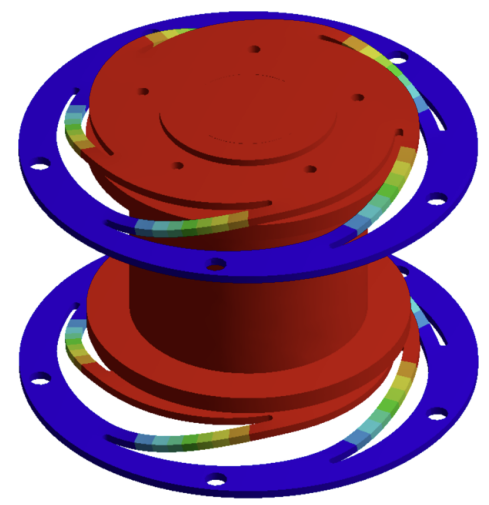
Y. K. Yong N. L. Mai, T. A. Hoang
Fabrication of Microneedles by Pulsating In Situ Dried Electrostretching for Transdermal Drug Delivery Journal Article
In: Small Methods, vol. 9, pp. 2500183, 2025, (The paper's cover art has been selected as the frontispiece of the journal, Oct 2025).
@article{Mai2025,
title = {Fabrication of Microneedles by Pulsating In Situ Dried Electrostretching for Transdermal Drug Delivery},
author = {N. L. Mai, Y. K. Yong, T. A. Hoang, T. H. Vu, H Vu, V. C. Doan, D. Cai, T. X. Dinh, D. V. Dao, V. T. Dau},
doi = {https://doi.org/10.1002/smtd.202500183},
year = {2025},
date = {2025-06-11},
urldate = {2025-06-11},
journal = {Small Methods},
volume = {9},
pages = {2500183},
abstract = {This paper introduces a novel pulsating in situ dried electrostretching (PIDES) technique for the fabrication of microneedles (MNs) for transdermal drug delivery. This method utilizes pulsed voltage to induce electrohydrodynamic forces that stretch and freeze a polymer droplet into a conical shape with a micrometer-scale tip. With the effects of solvent evaporation, the polymeric droplet is in situ stretched into a conical shape and solidified, transforming into a sharp MN, suitable for transdermal drug administration. Penetration and mechanical tests confirm that the MNs possess sufficient sharpness and strength for effective skin penetration applications. Additionally, curcumin loading and in vitro release tests with different concentrations demonstrate the MNs' ability to carry drugs and exhibit effective controlled release profiles. These findings highlight PIDES as a promising, low-cost, and simple approach for the development of painless and efficient transdermal drug delivery systems.},
note = {The paper's cover art has been selected as the frontispiece of the journal, Oct 2025},
keywords = {},
pubstate = {published},
tppubtype = {article}
}
